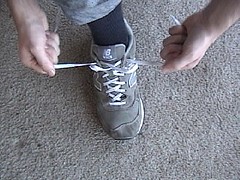
Ok, we have to admit. This is not exactly a “how to” guide.
In fact, writing such a guide may not be possible.
But first, let’s dispel the myth that it is impossible to acquire on-market assets from big pharma.
Acquiring Assets from Big Pharma may be difficult, but it is not impossible.
The underlying reality is that some companies are more willing to divest assets, and some have very good, streamlined processes for doing so.
While others…let’s just say that they don’t, or they won’t.
Novartis is a good example. Here, from memory and a quick search, are some on-market assets the company has divested or out-licensed over the past few years:
- US rights to Warner Chilcott for Enablex for $420 MM in 2010
- Global rights to Meda for Elidel for $420 MM in 2011
- UK rights to Alliance Pharma for Syntometrine for $11.5 MM in 2013
- US and other rights to Questcor for Synacthen for $135 MM in 2013
So while Novartis is willing to out-license assets, other company’s simply will never do so. The reasons are varied, and may not be obvious to folks outside the company. Some reasons we have heard include:
- Companies do not want to be perceived as “traders”
- Companies find value in brands and brand reputation
- Concerns over future lawsuits
So how do you do it? How do you acquire assets from big pharma?
There are no hard-fast rules, since company policies and processes differ. However, with this caveat in mind, here are a few ideas when developing your asset acquisition strategy:
First, you must be crystal clear on what you are looking for, and realistic on how much you are able to pay for the asset.
Second, the universe of opportunities must be created. Too often we see companies looking for “Anything with $25 million in sales that is in a niche therapeutic area that only requires 5 sales reps and can be bought for 1x sales.” How many opportunities like this are there? IMS Prescription data are always a good start.
Third, understand the process…if it even exists. It appears that Novartis has some process for receiving and assessing proposals. We know of a few others who are similarly well-organized. But are all big pharma companies like this? Critically, are there internal champions who’s job depends on generating Revenue from asset out-licensing? Maybe. Maybe not. If there is an internal process, then you will have to stick with it, regardless of how archaic or onerous it may seem.
If your target company is not organized for out-licensing, then the onus is on you to drive the process internally. This is time-consuming, difficult, and can lead to frustration. So having the flexibility to have other assets on the list is critical.
Fourth, you will have to make your pitch, and make it credible, especially if you are after an asset from a company without an out-licensing process. Importantly, it has to be worth their while, not only financially, but strategically as well. Also keep in mind the number of people who will be involved on the Big Pharma side: scouts, product managers, sales and marketing folks, manufacturing, legal…a company may not want to tie these folks up in a lengthy process for a $5 million transaction.
Lastly, recognize that your list of contacts may be insufficient for this exercise, especially with big pharma companies who are not set up for on-market asset out-licensing. For these types of companies, is critical to find the right internal champion that you can work closely with to drive the process through. That person may not be the Senior VP of Business Development. Rather, it could be a Director-level person who is hungry for a transaction and a “splash” within a company.
There is a lot more to this subject, and we’ll post some more thoughts in a future post.
Related articles
 Alliance Pharma plc Buys Novartis AG’s Syntometrine for $11.5 Million
Alliance Pharma plc Buys Novartis AG’s Syntometrine for $11.5 Million Profiles of Drug Companies “Doing it Right”: Novartis
Profiles of Drug Companies “Doing it Right”: Novartis


This Post Has One Comment
Pingback: The Premium of a Big Pharma License Deal | Lacerta Bio